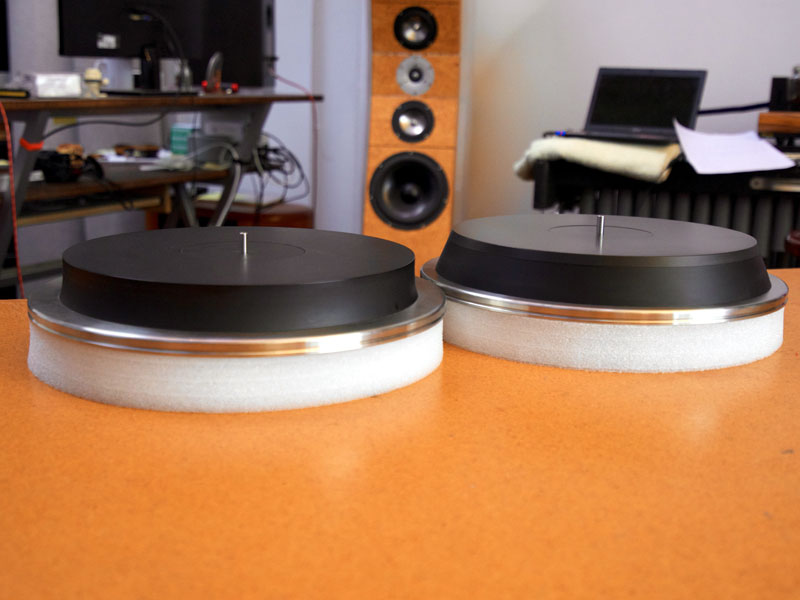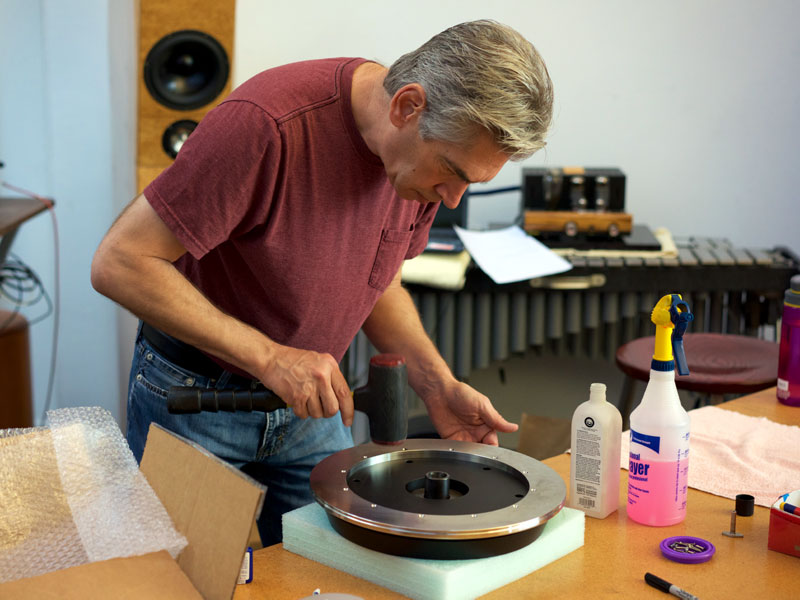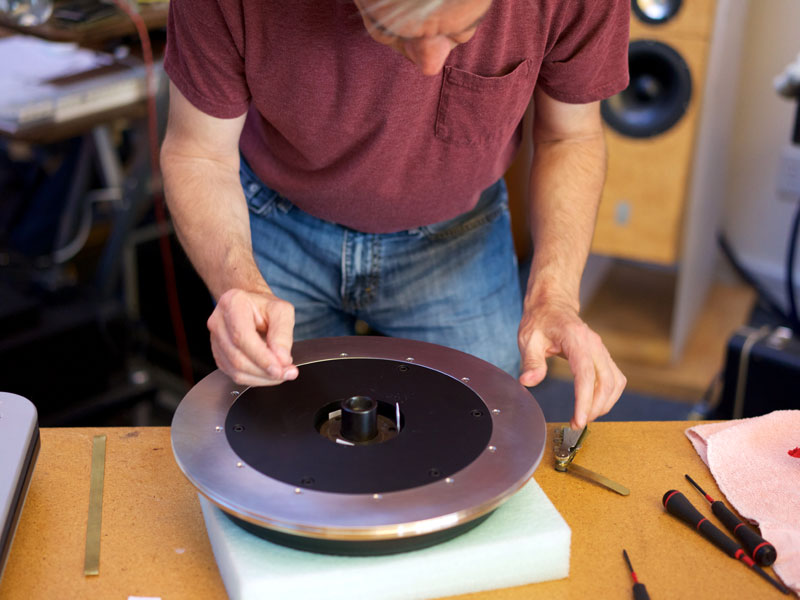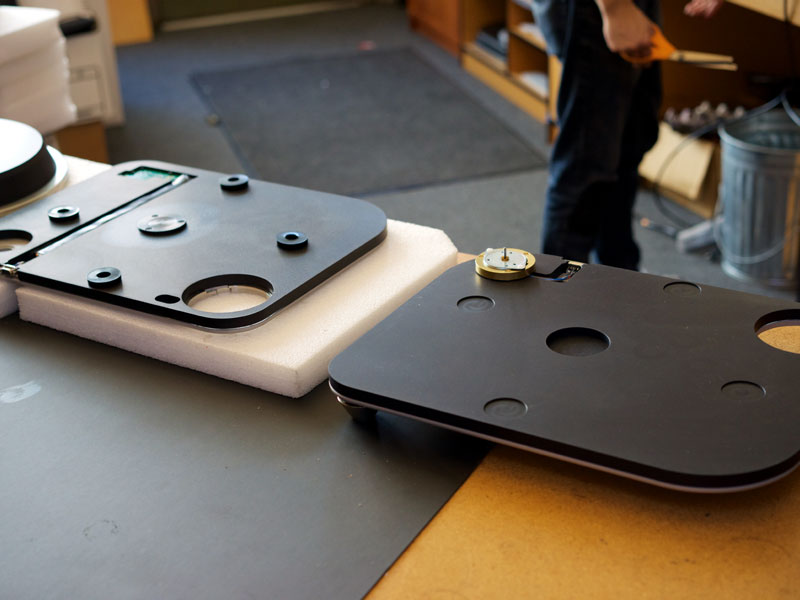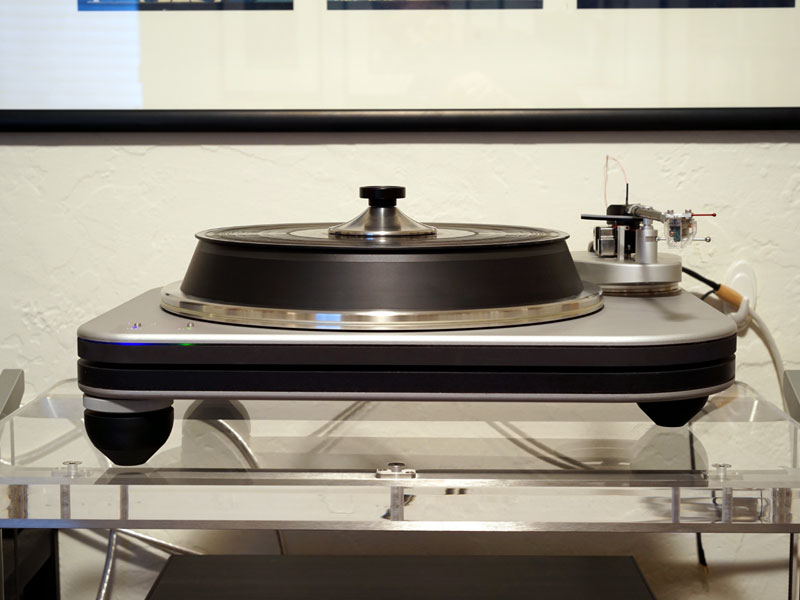Inside the Spiral Groove SG1.2
Perkins recently upgraded his turntable design, releasing it as the SG1.2. The SG1.2 incorporates a new platter design (shown above right, next to the previous platter) along with associated improvements. Overall mass is increased by more than 20 pounds, with much of that weight in the new platter. The magnetic assembly that reduces the platter weight on the spindle has been refined to further reduce weight on the bearing. The original stainless-steel isolation feet have been replaced with larger feet based on Perkins’ Strange Attractor technology. The SG1.1 cost $25,000 without tonearm or $31,000 with the Spiral Groove Centroid unipivot 'arm. The SG1.2 now cost $30,000 or $36,000 with the Centroid tonearm. Owners of the SG1 or SG1.1 can upgrade their turntable to an SG1.2 for $6000.
I recently spent several hours with Perkins watching him upgrade an SG1.1 turntable -- my SG1.1 turntable. Much of the design change centers on the turntable’s platter. The new platter inherits the slopped design developed by Perkins for his upcoming Revolution turntable, slated to replace the SG2. The SG1.2 uses the same steel drive ring attached to the base of the SG1.1. The balance of the original platter was composed of three layers: a phenolic base, followed by a vinyl layer topped with a layer of graphite. The new platter substitutes a black aluminum lower section for the phenolic and vinyl layers, with the graphite top attached via an interlocking pattern built into the top of the aluminum layer and the bottom of the graphite layer. This puzzle-like construction is said to alleviate interference from parallel surfaces.
The platter sits about 1/4" higher after the update, requiring a new step-up ring under the tonearm to compensate for the added height of the new platter. The Centroid tonearm remains the same other than the extra height of the bayonet mount. Like the original, the SG1.2 incorporates a magnetic platter-levitation system. Perkins prefers to use magnetic force to minimize contact, rather than totally eliminating it with an air-bearing solution. The same inverted sapphire disc/hardened-steel bearing carries over to the SG1.2, but a new magnet assembly is used to account for the added platter weight and to further decrease the effective weight of the platter on the bearing.
The body of the turntable, two constrained-layer platforms separated by four elastomers that mechanically decouple the assemblies, remains the same except for the substitution of heavier-duty elastomers to account for the added weight. The outboard sine-wave generator remains the same, except for a new faceplate and serial-number badge that reflect the new model number.
According to Perkins, the increased weight of the new platter adds more impact to the bass and a bit more focus and depth to imaging. The new platter materials yield a very fast sound with an even lower noise floor than previously from a design that was already exceptional in this regard. "Even pops and ticks seem quieter, I believe, because of the platter material and internal shape," noted Perkins. My take? The increase in bass stability was immediately
clear, and my impression is that there is far more than "a bit” more depth to
imaging. Furthermore, the changeover also seemed to have tightened up speed stability,
going by my measurements on Chris Feickert’s PlatterSpeed app. The SG1.2 also wins on
the aesthetic front, with the sloping line of the platter reflecting that of the new, more
robust-looking support feet. All in all, these are meaningful improvements to an already
great turntable. |

